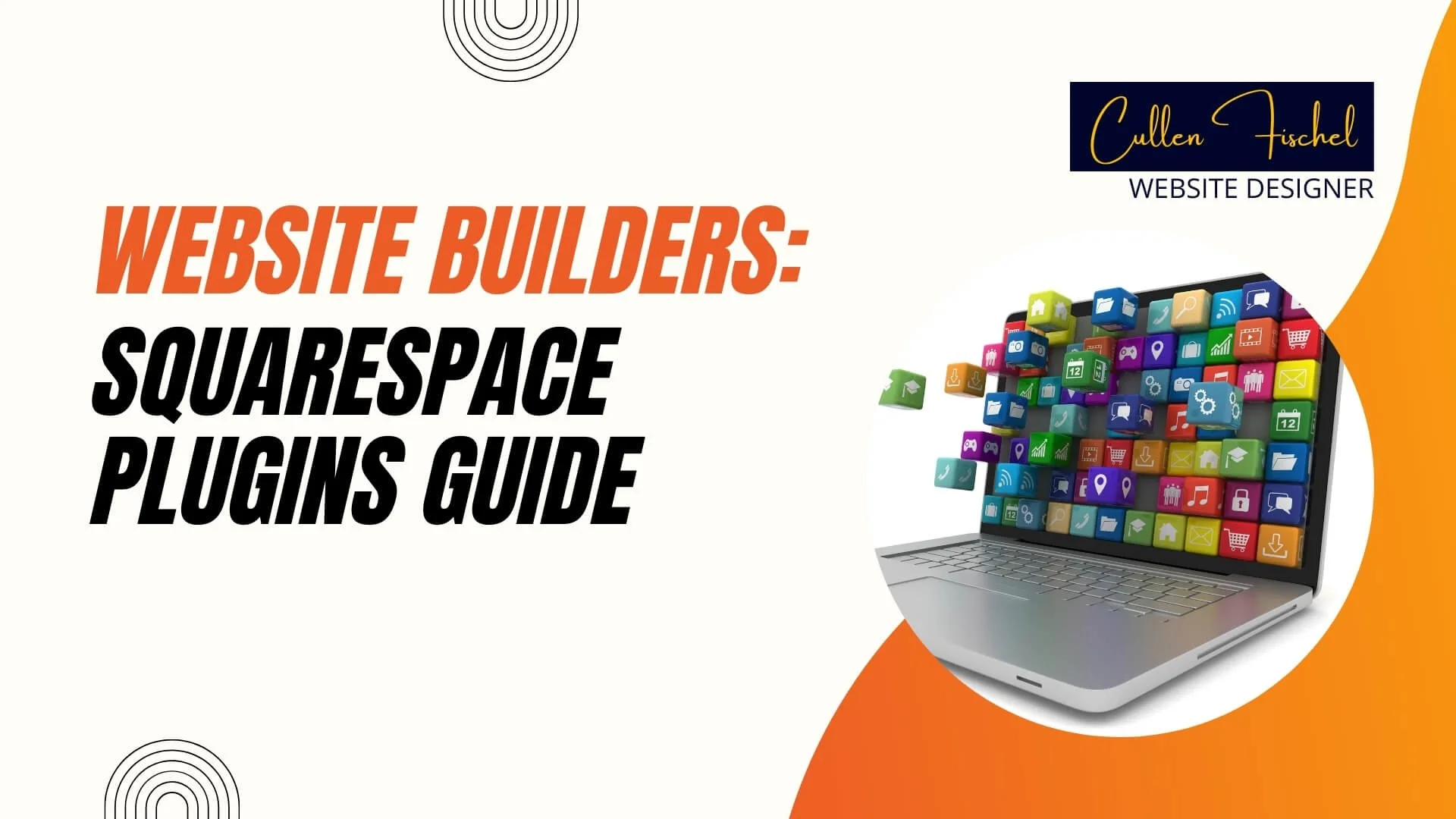Mastering Shopify: Tips and Tricks for Building a Successful E-commerce Store
Mastering Shopify: Tips and Tricks for Building a Successful E-commerce Store
Master the art of Shopify with expert insights from Cleveland's leading website designer, Cullen Fischel. From setting up your e-commerce store to advanced strategies in web design, this guide offers actionable tips and in-depth analysis tailored to business owners and marketers in Ohio and beyond. Explore Cullen's success tips, common FAQs, and unlock the potential of your online store today!
Cullen Fischel | DECEMBER 3, 2023 | 5 min. read
5 minute read
By Cullen Fischel, website designer
Key Takeaways
E-commerce is more than just a trend; it's a fundamental aspect of modern business. I've witnessed firsthand the transformative power of Shopify in the world of online retail. Here's what you'll learn from this post:
Understanding Shopify and its dominance in e-commerce.
Building your store with user experience in mind.
Applying SEO and marketing strategies within Shopify.
Monitoring and analyzing performance with tools provided.
Implementing expert tips from a seasoned website designer in Cleveland.
Understanding Shopify: A Comprehensive Guide
What is Shopify?
Shopify is an e-commerce platform that has revolutionized the way businesses sell online. Whether you are a seasoned retailer or just starting, Shopify offers tools to create a professional online store without needing deep technical expertise.
Over the years, as a website designer in Cleveland, I've seen how Shopify has democratized e-commerce. It's allowed businesses of all sizes to create engaging and efficient online stores, bridging the gap between quality website design and accessibility. With hundreds of templates and a user-friendly interface, it's a platform that can suit almost any business need.
In the heart of Ohio, the surge of Shopify users is noticeable. Entrepreneurs are leaning towards this platform not just because of its robust functionality but also because of the supportive community around it.
Why Choose Shopify?
There are many e-commerce platforms out there, so why choose Shopify? The reasons are manifold, and they revolve around ease of use, flexibility, and scalability.
First and foremost, Shopify is user-friendly. You don't need to be a web design expert to set up a store. The intuitive interface guides you through the process, making it easy for anyone to launch a professional-looking online store.
Second, the platform offers a wide array of customizable templates, aligning with your brand's identity and website design goals. Even here in Cleveland, I've worked with diverse businesses, each with unique needs, and Shopify has never failed to provide a fitting solution.
Lastly, scalability is at the core of Shopify's design. As your business grows, Shopify grows with you. You can add new products, expand to new markets, and even integrate with physical stores without a hitch.
Building Your Store: Focusing on User Experience
Creating an Attractive Layout
In the world of online retail, first impressions are everything. As an experienced web designer based in Cleveland, I can't emphasize enough the importance of creating a layout that resonates with your audience.
Shopify's range of templates is designed to cater to various industries, styles, and tastes. You can select a theme that fits your brand and customize it further to enhance the user experience. Here are some insights I've gathered over my years as a website designer in Ohio:
Choose Wisely: Your theme should resonate with your brand's identity. A minimalist theme might suit a tech store, while a colorful and vibrant theme might be perfect for a children's toy store.
Make It Responsive: Ensure your website design adapts to different devices. With mobile commerce on the rise, a mobile-friendly design is no longer optional but essential.
Keep It Intuitive: Your navigation should be smooth and intuitive. If a customer struggles to find what they're looking for, they're likely to leave.
Product Presentation Matters
A great product presentation can be the difference between a sale and a missed opportunity. It's not just about the images but the whole package - descriptions, pricing, reviews, and more.
Here are a few tips that have worked for my clients in Cleveland:
High-Quality Images: Your product photos should be clear, well-lit, and showcase the product from different angles.
Detailed Descriptions: Provide comprehensive details about the product, including size, material, care instructions, and more.
Social Proof: Encourage customers to leave reviews. Positive feedback builds trust and often tips the balance in favor of a purchase.
Enhancing Checkout Process
A smooth and secure checkout process can increase conversion rates and reduce cart abandonment. It's an area that deserves special attention from any website designer. Here's what you need to know:
Simplify the Process: Minimize the number of steps to checkout. Each additional step can lead to potential drop-offs.
Offer Multiple Payment Options: Cater to various payment preferences, whether it's credit card, PayPal, or others.
Build Trust: Include security badges and clear return policies. These create a sense of security and can improve conversion rates.
Implementing SEO and Marketing Strategies
Understanding Shopify SEO
SEO is not just a buzzword; it's a vital part of your online success. Shopify offers SEO-friendly features, but understanding how to use them is key.
Working with various businesses in Cleveland, I've honed some SEO strategies that work particularly well within Shopify:
Keyword Research: Find relevant keywords that your target audience is searching for. Incorporate them naturally into your product descriptions, titles, and meta descriptions.
Optimize Images: Compress images and include descriptive alt tags. This can improve loading speed and accessibility, boosting your site's SEO.
Build Quality Backlinks: Collaborate with bloggers, influencers, or other businesses in Ohio. Quality backlinks can increase your site's credibility and rank.
Social Media Integration
Social media is not just a place for socializing; it's a powerful marketing tool. Shopify allows seamless integration with various social media platforms, enabling you to reach a broader audience.
Connect Your Store: Link your Shopify store with platforms like Facebook, Instagram, and Pinterest. You can even sell directly through these platforms.
Engage Your Audience: Create engaging content that resonates with your audience. Share behind-the-scenes stories, customer testimonials, or product launches.
Leverage Ads: Utilize paid advertising on social platforms to target specific demographics. This can be highly effective if done correctly.
Monitoring and Analyzing: Tracking Your Success
Utilizing Shopify Analytics
As a web design expert, I always emphasize the importance of data-driven decisions. Shopify offers comprehensive analytics tools that allow you to monitor various aspects of your store. Here's how to make the most of them:
Understanding Your Audience: Track where your visitors are coming from, what devices they are using, and their behavior on your site. This data can guide your marketing strategies and help you tailor your content.
Analyzing Sales Trends: Keep an eye on what products are selling well, what times of day see the most sales, and other trends that might inform your inventory decisions.
Monitoring Conversion Rates: Identify what channels are driving the most conversions, be it social media, email marketing, or organic search. Focus your efforts on what's working for your Ohio-based audience or beyond.
Integrating Third-Party Tools
Sometimes, Shopify's built-in analytics might not be enough. There are numerous third-party tools that can provide deeper insights.
Google Analytics: A must-have for any website designer, this tool offers detailed insights into user behavior, traffic sources, and more.
Heatmaps: Tools like Hotjar can provide heatmaps, showing you where users are clicking, scrolling, and how they navigate through your site. It's a great way to understand user experience.
Email Tracking Tools: If you're running email campaigns, tools like Mailchimp provide valuable analytics on open rates, click-through rates, and conversion.
Cullen Fischel's Tips for Success
Stay Up-to-Date: The e-commerce landscape is constantly changing. Keep an eye on trends, and don't be afraid to adapt your strategies.
Invest in Customer Service: Whether in Cleveland or globally, excellent customer service can set you apart from competitors. Consider live chat support or detailed FAQ sections.
Mobile Optimization is Key: With an increasing number of purchases made on mobile devices, ensure your web design is mobile-friendly.
Leverage Social Proof: Use testimonials, ratings, and social media engagement to build trust and credibility.
Think Local: If you're operating in a specific region like Ohio, consider local SEO strategies and community engagement.
Mastering Shopify is not just about setting up a store but about creating an experience that resonates with your audience. It's about leveraging the platform's capabilities to drive traffic, convert visitors, and build a loyal customer base.
As a seasoned website designer in Cleveland, Ohio, I can assure you that the above strategies and tips can be a robust framework for building a successful e-commerce store on Shopify. Whether you're a business owner or an employee responsible for your company's online presence, understanding and implementing these insights can propel your business to new heights. If you need tailored assistance or have more questions, feel free to reach out. Happy selling!
Ask a Website Designer
Q: How do I choose the right Shopify theme for my store?
A: Choosing the right theme involves understanding your brand, target audience, and industry. Consider your brand's aesthetics and what your customers would find appealing. Use Shopify's customizable themes as a starting point, and don't hesitate to seek professional website design assistance if needed.
Q: What are the most important SEO factors to consider in Shopify?
A: Focus on aspects like keyword optimization, meta descriptions, image alt tags, site speed, and mobile responsiveness. Building quality backlinks and creating engaging, relevant content will also boost your SEO. A detailed SEO strategy tailored to your market, whether in Cleveland or elsewhere, can significantly improve visibility.
Q: How can I ensure a seamless checkout experience?
A: Simplicity is key. Reduce the number of steps to checkout, offer multiple payment options, and make sure to display security badges to build trust. A mobile-friendly checkout process is also vital. Consider A/B testing different checkout flows to see what works best for your customers.




